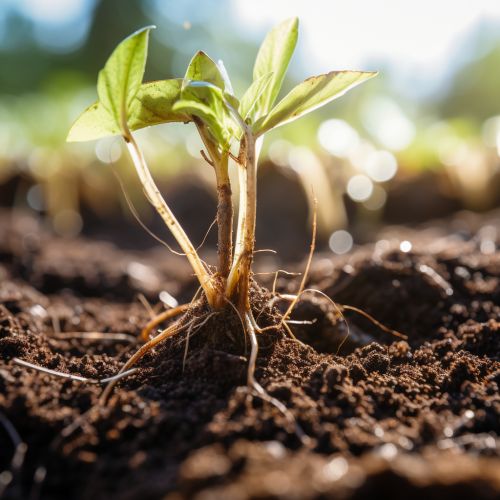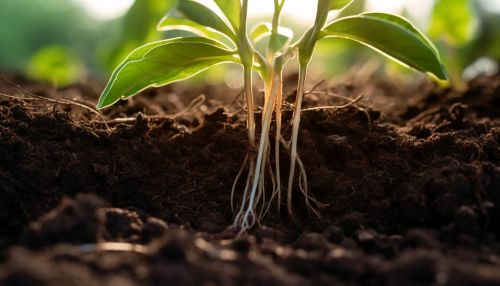Mechanisms of Plant Root Exudation and Soil Microbial Interactions
Introduction
Plant root exudation is a process where plants secrete various substances into the rhizosphere, the narrow region of soil directly influenced by root secretions and associated soil microorganisms. These substances, known as exudates, include sugars, amino acids, organic acids, vitamins, nucleotides, and secondary metabolites. The exudates play a significant role in plant-microbe interactions, nutrient acquisition, and soil structure formation. This article will delve into the mechanisms of plant root exudation and the subsequent interactions with soil microorganisms.
Mechanisms of Plant Root Exudation
Plant root exudation is a complex process involving both passive and active mechanisms. Passive exudation occurs due to the concentration gradient between the root cells and the soil environment, while active exudation involves energy-dependent transporters.
Passive Exudation
In passive exudation, substances diffuse from the root cells into the soil due to a concentration gradient. This process is facilitated by the semi-permeable nature of the root cell membrane. Passive exudation is largely influenced by the root's metabolic activities and the soil's physicochemical conditions.
Active Exudation
Active exudation, on the other hand, involves the transport of substances against a concentration gradient. This process requires energy, typically in the form of ATP, and is mediated by specific transport proteins located in the root cell membrane. Active exudation allows plants to secrete specific compounds into the soil, often in response to specific environmental cues.


Soil Microbial Interactions
The exudates secreted by plant roots significantly influence the microbial community in the rhizosphere. These substances serve as a nutrient source for many soil microorganisms, promoting their growth and activity. In return, these microorganisms can benefit the plant in various ways, such as enhancing nutrient availability, suppressing plant pathogens, and promoting plant growth.
Microbial Nutrient Cycling
Soil microorganisms play a crucial role in nutrient cycling, converting nutrients into forms that plants can absorb. For instance, bacteria known as nitrogen-fixing bacteria can convert atmospheric nitrogen into ammonium, a form that plants can utilize. Similarly, phosphorus-solubilizing bacteria can convert insoluble phosphorus compounds in the soil into soluble forms that plants can absorb.
Plant Pathogen Suppression
Certain soil microorganisms can suppress plant pathogens, thereby promoting plant health. These beneficial microorganisms can outcompete pathogens for resources, produce antimicrobial compounds, or induce systemic resistance in plants.
Plant Growth Promotion
Some soil microorganisms, known as plant growth-promoting rhizobacteria (PGPR), can enhance plant growth directly by producing plant growth hormones or indirectly by improving nutrient availability.
Conclusion
Understanding the mechanisms of plant root exudation and the subsequent interactions with soil microorganisms is crucial for sustainable agriculture. By manipulating these processes, we can enhance crop productivity, improve soil health, and reduce reliance on synthetic fertilizers and pesticides.
